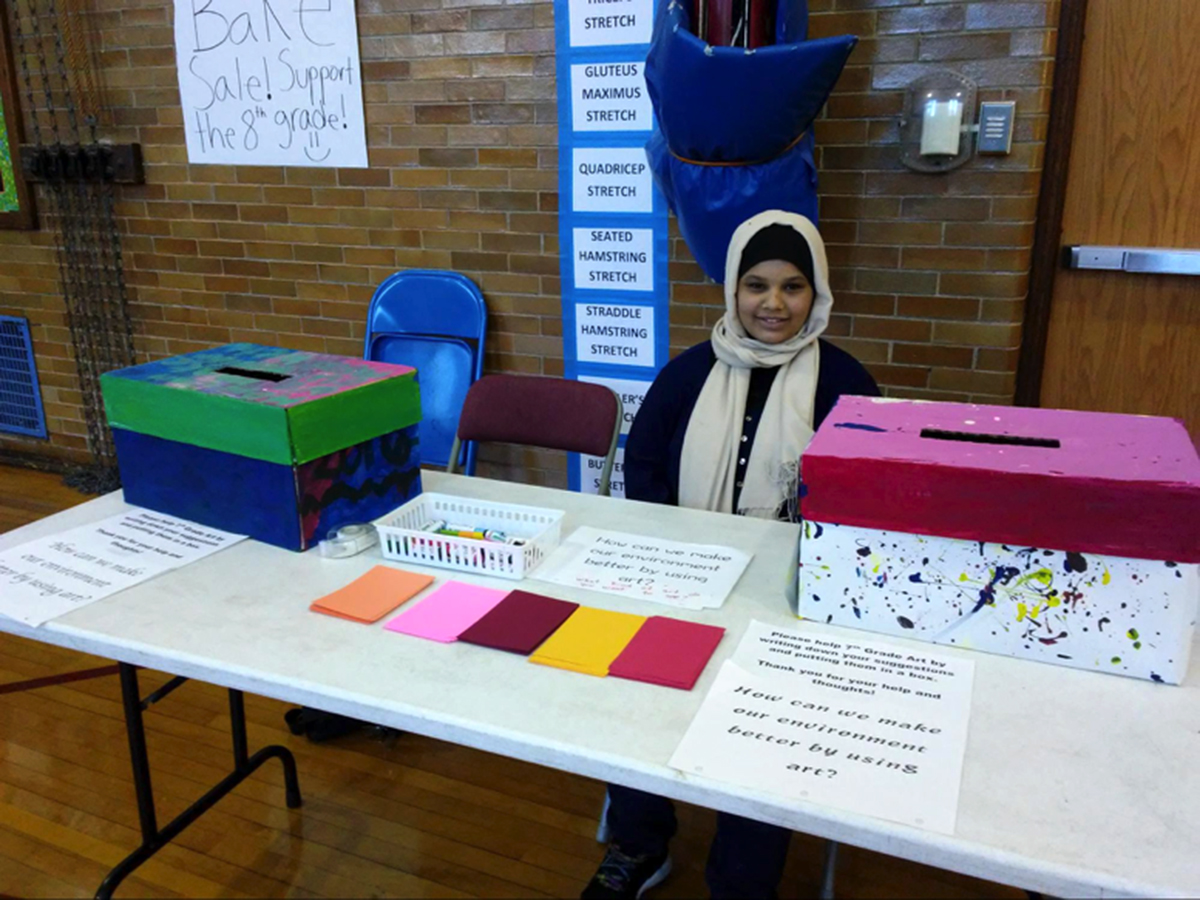Recycled Panther Mural
By Katreena Dyrek
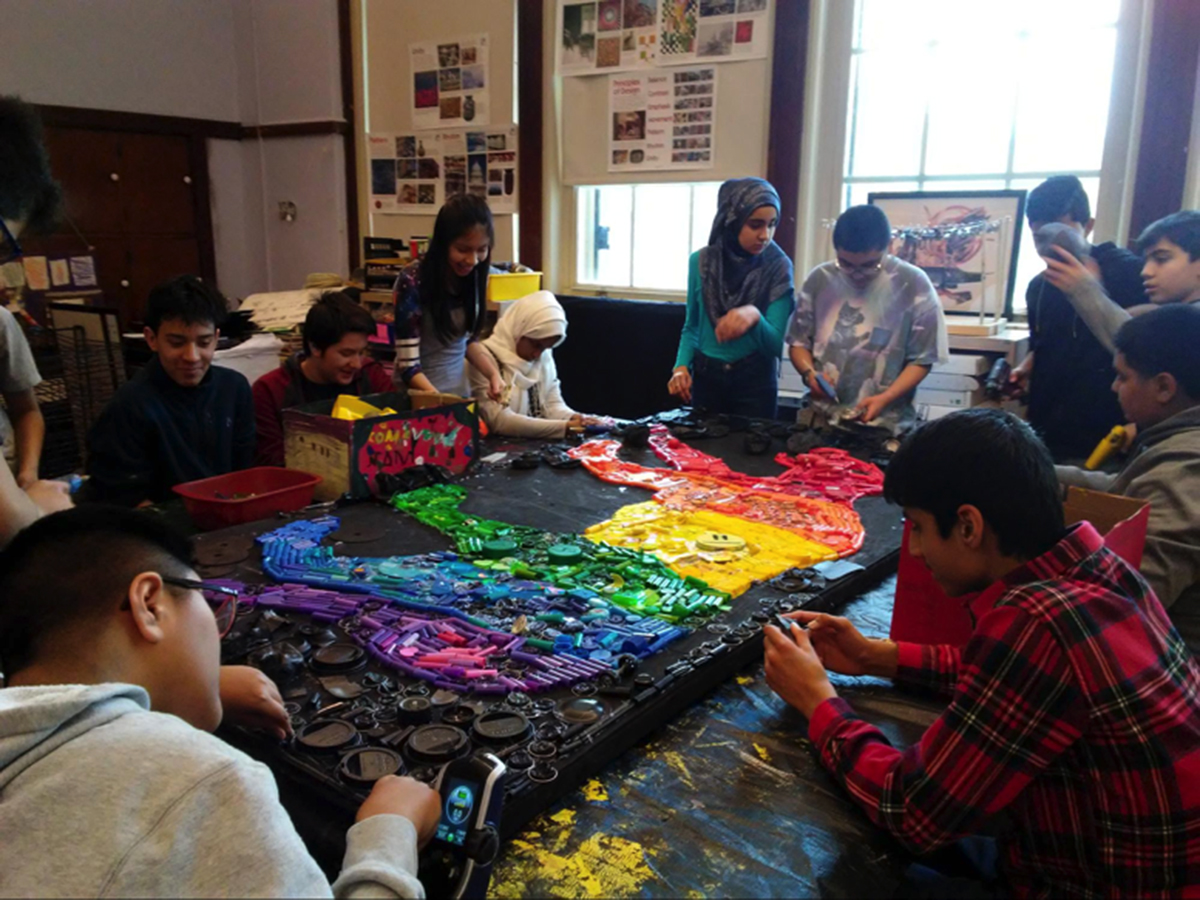
In this project, 7th graders pondered what “community” means to them and engaged in a slow process of directing themselves in creating a gift of a mural for their school. The teacher stepped into a supporting role of listener and facilitator, and responded to student ideas by offering strategies and skills workshops for realizing their own ideas. While allowing students to pace themselves slowly through ideation and creation sometimes challenged the teacher’s habits of direct instruction, she equally noticed the beauty and deep learning that arose from a self-motivated project where students’ work often had the character of quiet, focused, collective play.
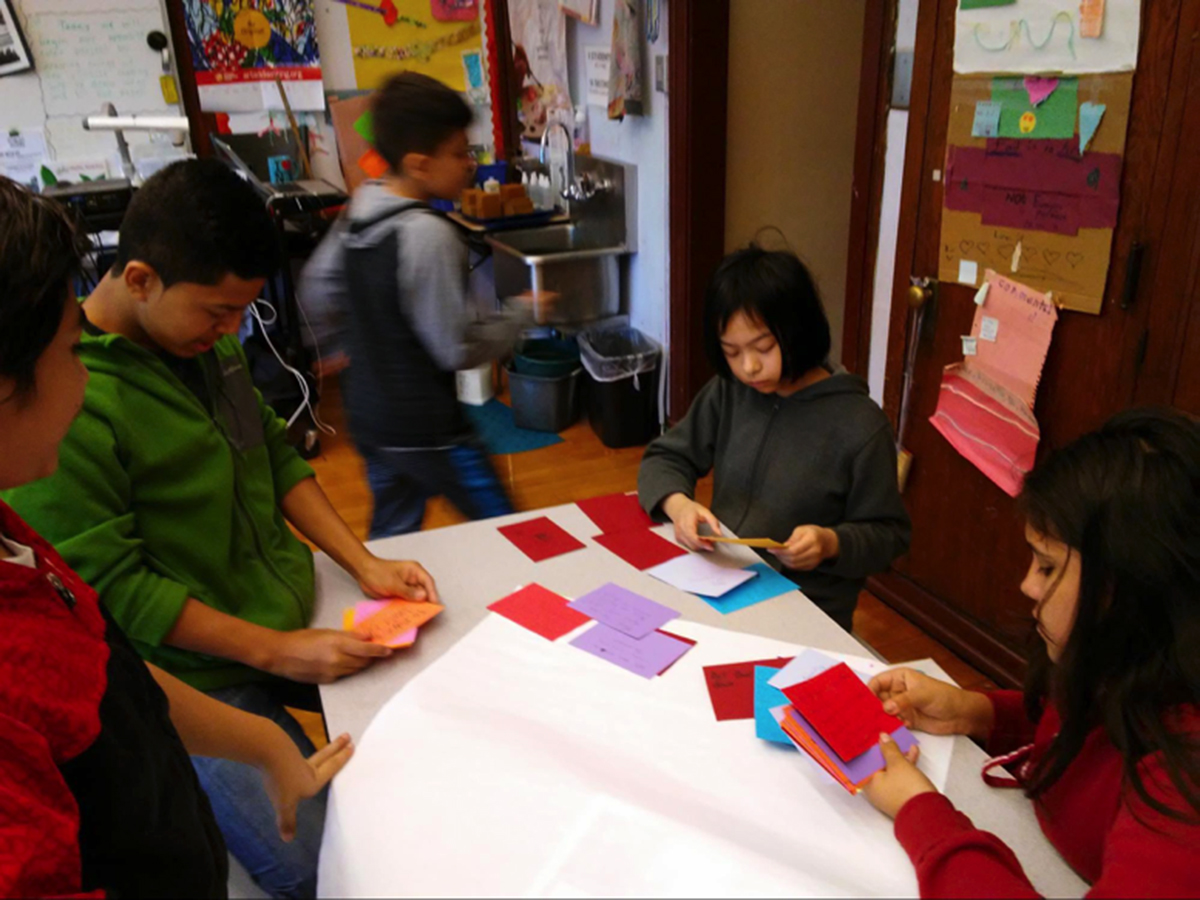
Goals and Objectives
- Students will be able to identify an issue of importance to their school community.
- Students will study artist approaches to improving communities.
- Students will work together to create a work of art that improves the school.
Guiding Questions
- How can we use art to make our school better?
- How can we involve the community meaningfully in our process?
- How can a class work together as a collective to complete a collaborative work of art?
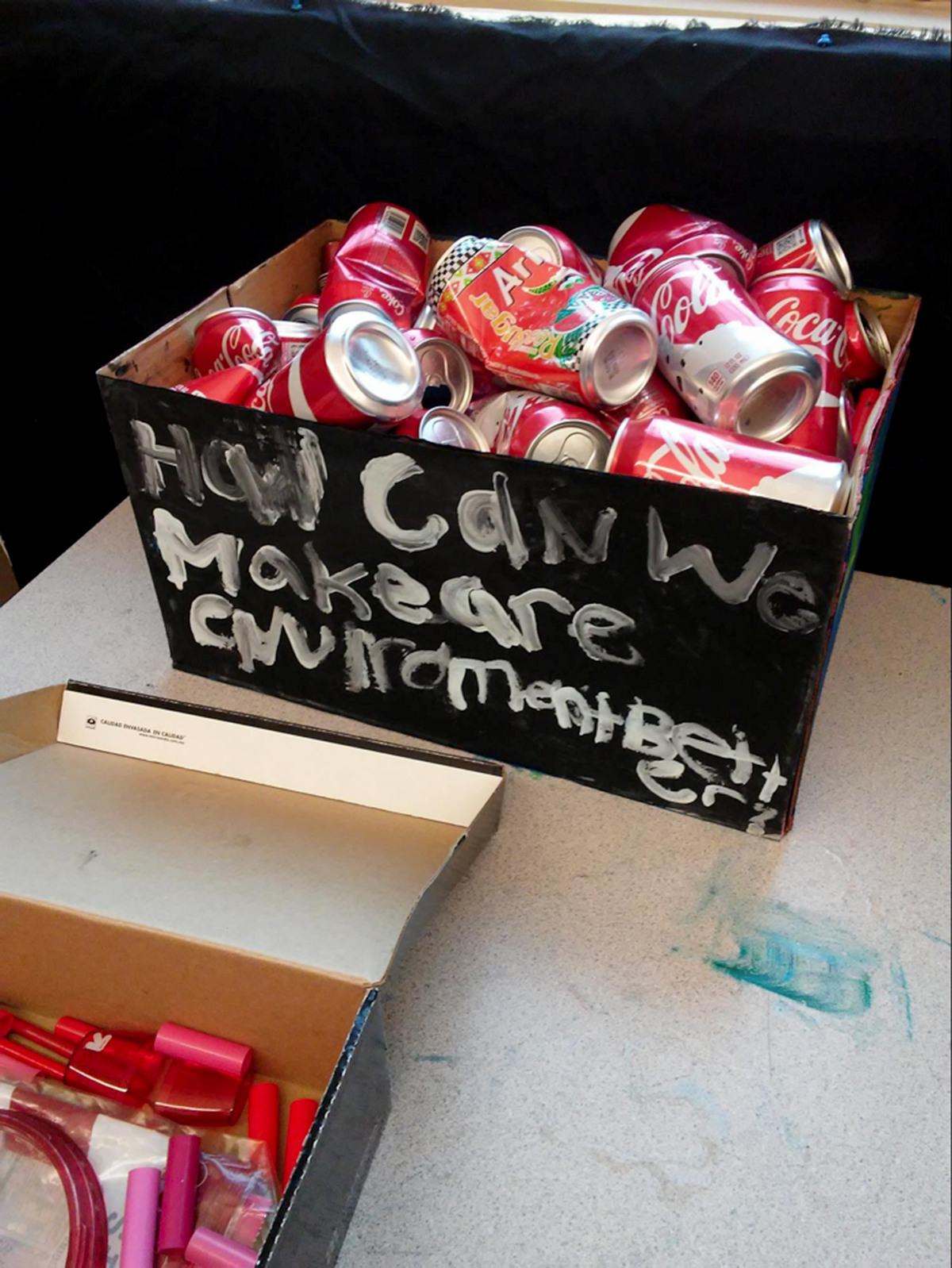
Documentation + Assessment
- Students used photography to capture the process
Learning Activities
Step 1
Contributing to our School
Arrange students in small discussion groups to brainstorm ways to make the school better through art, such as creating a community mural.
Step 2
Introduce Contemporary Art Strategies
Build on students’ ideas from their brainstorming sessions by offering examples of contemporary art that might spark ideas for designing a practical plan.
Step 3
Make a System of Roles for the Collective
Once students have decided on their plan for a work of art they want to create together, teach them professional art production by offering a selection of production roles. For example, some students might choose roles as painters, while others might like to manage and care for the group’s materials.
Step 4
Gather, Examine, and Experiment with the Materials for the Larger Work
Offer students the opportunity to spend time with their materials and try out strategies for working with them. If using found objects, help students create a collection system. Demonstrate and practice skills for each step of the process until students feel confident approaching the collective piece.
Step 5
Create the piece!
Allow ample time for students to enjoy creating their work together and encourage them to be supportive of the roles of others in the collective.
Step 6
Share and reflect
Have an unveiling party or other community event where the artists can show their finished work and documentation from the process. Allow each artist to express what the process has meant to them and why they wanted to offer this gift to the community.
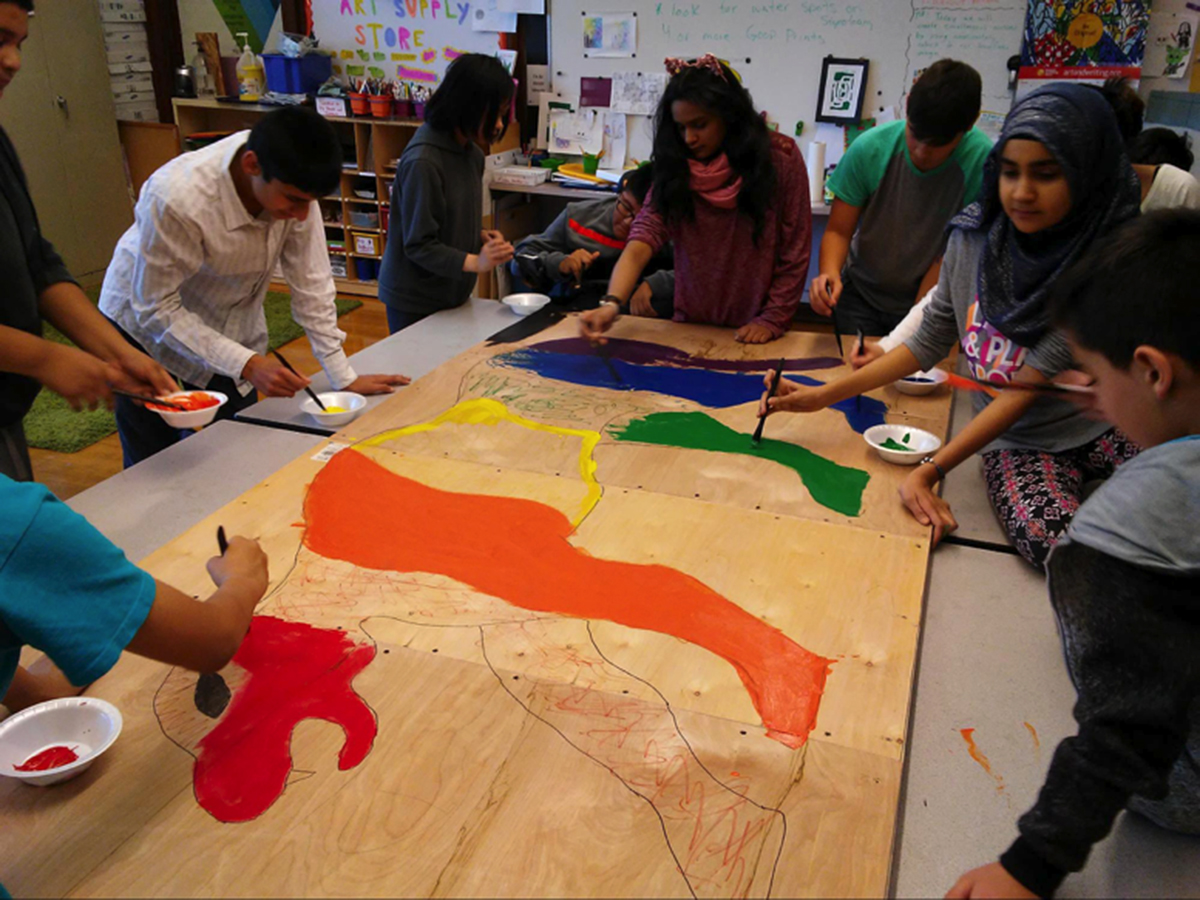

Materials
- Paint
- Found objects
- Adhesives
- Wall
Katreena Dyrek
Mary Gage Peterson Elementary School
Katreena Dyrek grew up in a small town, Fox River Grove. She moved to Chicago in 2004 and has been here ever since. She noticed things were drastically different from where she grew up, obvious divides and financial gaps that were not as blatant in Fox River Grove. Katreena went to community college at Harold Washington College, then to UIC and finally received her bachelor’s degree at Northeastern Illinois University in 2013. During her schooling, she closely followed the CPS school closings and the Chicago Teachers Union. Her artwork reflected this and she created pieces based on the things she saw, read, and experienced during that time. She also became very interested in global news and the Occupy movement. She liked to follow and listen to multiple alternative podcasts, news stations, and print. Then she received her first teaching job at Peterson Elementary. She immediately thought she would change the world. Then the first month of teaching went by, her priorities shook, and her reality of teaching shifted from social justice to classroom management, organization, and curriculum building from standards and skills. She felt like she lost her social justice spark. Then this opportunity came to life, and that flame started sparking again. She hopes to learn how to incorporate more social justice contemporary art into her practice.
Katreena reflects on their process:
I was surprised by how engaging this project is for students. Last year it was a struggle for me to get middle school students engaged in the work we were doing. When you give students the control of the theme, topic, or focus of the work, they become more invested in the artmaking process. They began the process by assuming the project itself would be quick, and that they’d gather a few materials and be done, but it required lots of materials and assembly / creation. When it all came together at the end, they were really impressed with themselves.
